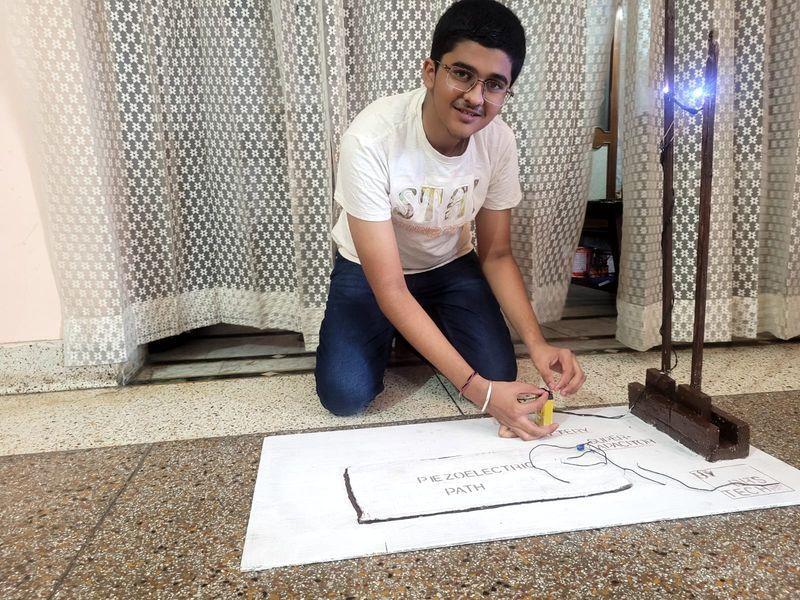
Hoshiarpur Student Builds Device to Generate Power from Footsteps
In a groundbreaking innovation that could revolutionize the way we think about power generation, a Class 8 student from Hoshiarpur, Punjab, has developed a device that harnesses energy from the simplest of human actions – walking. Sanchit, the young innovator, has caught the attention of local officers, scientists, and enthusiasts with his science project, “Power beneath our feet,” which uses piezoelectric technology to convert footsteps into electricity.
The 14-year-old Sanchit’s project is a testament to his curiosity and passion for science and technology. He was inspired to create the device after learning about piezoelectric materials, which generate electricity when subjected to mechanical stress. Sanchit realized that the constant pressure and movement of footsteps could be harnessed to generate power, and thus, his innovative project was born.
The device, which Sanchit has designed and built himself, consists of a series of sensors and piezoelectric materials placed on a walkway or pathway. As a person walks on the walkway, the sensors detect the pressure and movement of their footsteps, generating an electrical charge that is stored in a battery. The device is capable of charging a small electronic device, such as a smartphone, in just a few hours.
Sanchit’s innovative project has not only impressed his teachers and classmates but has also caught the attention of local authorities and scientists. The Deputy Commissioner of Hoshiarpur, Kumar Amit, has praised Sanchit’s efforts, saying, “It’s a remarkable achievement by a young student. We are proud of his innovative thinking and the potential of his project to benefit society.”
Dr. Jatinder Singh, a scientist at the Indian Institute of Technology (IIT), Jalandhar, has also praised Sanchit’s work, saying, “Piezoelectric technology has vast applications in various fields, including energy harvesting. Sanchit’s project is a great example of how this technology can be used to generate power from everyday activities.”
Sanchit’s project has also generated interest among environmental enthusiasts, who see the potential for reducing our reliance on fossil fuels and decreasing our carbon footprint. With the increasing awareness of climate change and the need to adopt sustainable practices, Sanchit’s device could be a game-changer in the field of renewable energy.
While Sanchit’s project is still in its infancy, it has the potential to transform the way we think about power generation. Imagine walking on a treadmill or a path and generating electricity as you go, powering your devices and reducing your reliance on the grid. It’s a vision that is both exciting and achievable, and Sanchit’s innovative project is a step in the right direction.
Sanchit’s success is also a testament to the importance of encouraging students to pursue their passions and interests in science and technology. His project is a reminder that innovation and creativity can come from anywhere, and that with dedication and hard work, even the most ambitious ideas can become a reality.
As Sanchit continues to refine his project and explore its potential applications, the world is watching with bated breath. Will he be able to scale up his device and make it commercially viable? Can his project be used to power entire communities or even cities? Only time will tell, but one thing is certain – Sanchit’s innovative project has opened up new possibilities for harnessing energy from the simplest of human actions, and has inspired a new generation of young inventors and innovators to follow in his footsteps.






